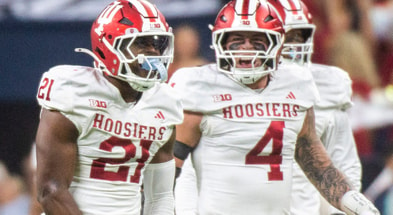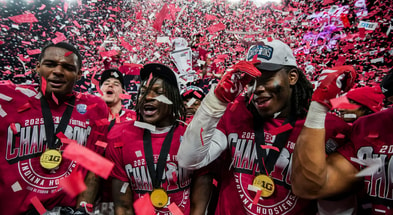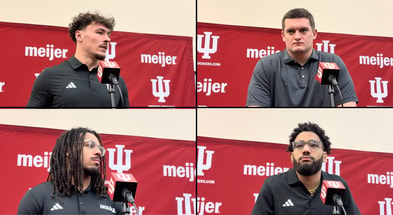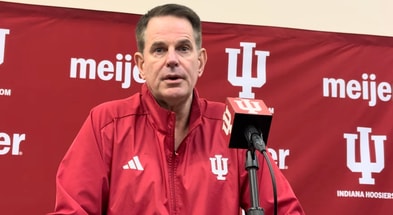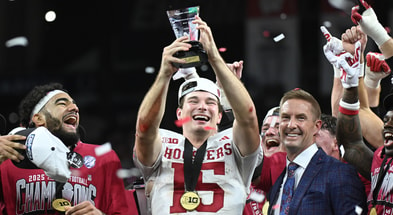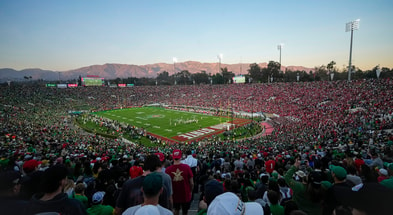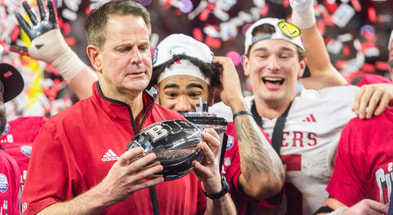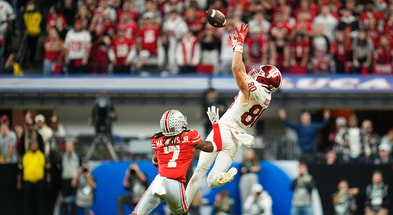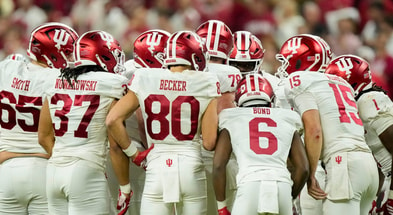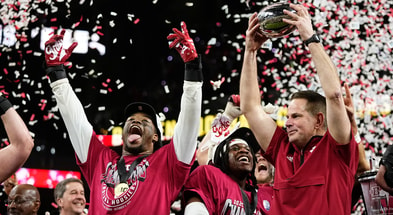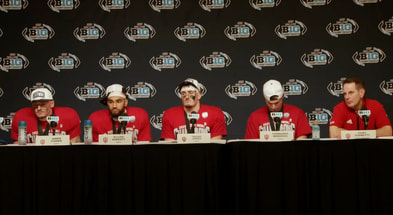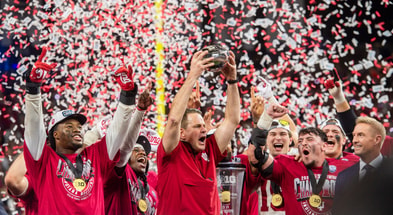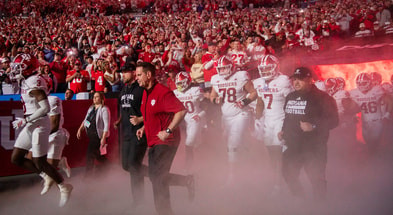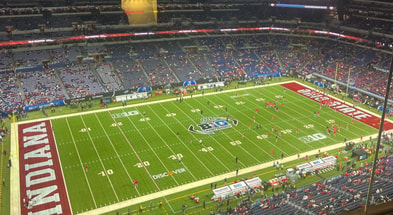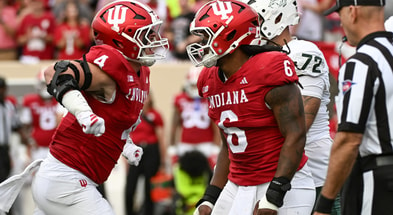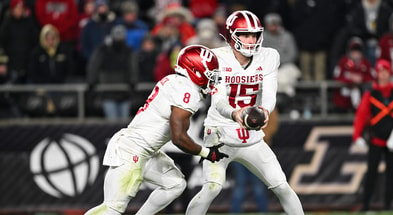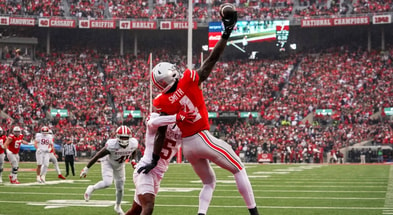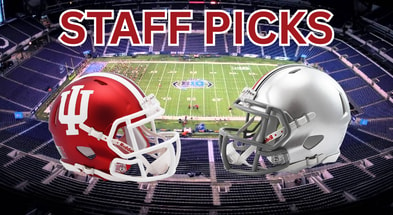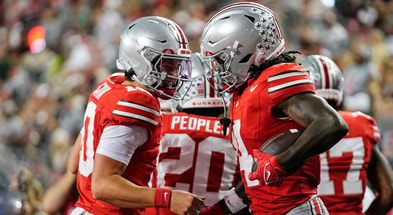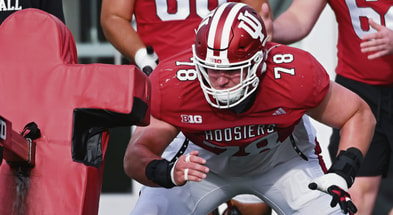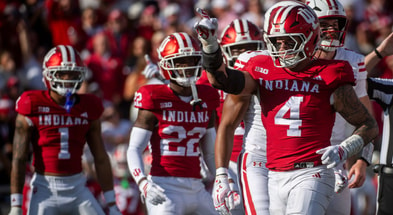Takeaways from Big Ten Commissioner Tony Petitti at Big Ten Football Media Days
Big Ten Commissioner Tony Petitti opened the league’s annual football media days Tuesday under the bright lights of Las Vegas, where he tackled some of the thorniest issues in college athletics.
Those issues included playoff expansion, revenue sharing and why the Midwest-rooted conference took its show to the desert.
In a wide-ranging session, Petitti returned repeatedly to what’s become the Big Ten’s drumbeat: the future of the College Football Playoff must emphasize performance on the field, not debates in a boardroom.
Here’s a look at some of the key takeaways from Petitti’s time on the podium on Tuesday.
RELATED: Big Ten Football Media Days Q&A: Tony Petitti
Big Ten pushes for more auto bids in College Football Playoff
Petitti doubled down on his league’s preference for a 16-team CFP format that grants automatic qualifiers — particularly the 4-4-2-2-1 model.
Under that structure, four automatic berths would go to the Big Ten and SEC, two each to the ACC and Big 12, one to a Group of Five program, and three would be filled with at-large bids.
“Formats that increase the discretion and role of the College Football Playoff selection committee will have a difficult time getting support from the Big Ten,” Petitti explained. “We want the results on the field to matter most.”
The Big Ten’s preferred model stands in contrast to the 5+11 format championed by the SEC, which would award spots to the five highest-ranked conference champions and 11 at-large teams — a model that critics say invites more subjectivity and politics into the process.
Petitti suggested that the more committee-driven approach opens the door for inconsistencies based on strength of schedule and rankings — especially in a world where conferences play differing numbers of league games. The Big Ten currently plays nine; the SEC plays eight.
Still, Petitti downplayed the significance of that difference under the 4-4-2-2-1 proposal.
“In a model that emphasizes automatic qualifiers, the number of conference games matters less,” he said. “What we do want, though, is an incentive for schools to schedule more challenging nonconference opponents.”
Petitti also pushed back on the idea that some teams might benefit from softer in-conference slates. Asked about Indiana’s 2024 schedule, he noted that at the beginning of the season the Hoosiers were slated to face the two teams that had appeared in the national title game the previous year.
SEC-Big Ten unity still possible
Despite the current impasse between college football’s two most powerful leagues, Petitti remained optimistic that a compromise could be reached with the SEC.
“We’re obviously not in the same place on these discussions,” he said. “I think the goal would be to bring people back together. Every time the two leagues have come together, good things have happened.”
Petitti also reaffirmed that the Big Ten and SEC remain the key voices in CFP reform discussions.
SEE ALSO: 6 key quotes from Curt Cignetti during podium session at Big Ten Media Days
Revenue sharing left to the schools
On another major front — how college athletic departments will now begin sharing revenue with athletes — Petitti said that decisions are being left to the individual institutions, at least for now.
“There’s no obligation to get to any number, what sports you choose to support, how you allocate the money among your student-athletes — that’s really a decision that’s made institutionally,” Petitti said.
Top 10
- 1Breaking
Kendal Briles
Hired as South Carolina OC
- 2Hot
Heisman finalists
List of four revealed
- 3
All-American
On3 True Freshman AA team
- 4Trending
ACC Commish responds
Notre Dame allegations
- 5
Notre Dame AD
ACC did 'permanent damage'
Get the Daily On3 Newsletter in your inbox every morning
By clicking "Subscribe to Newsletter", I agree to On3's Privacy Notice, Terms, and use of my personal information described therein.
He said the Big Ten’s approach is to let schools shape what works best for them, while continuing to fund all programs and support student-athletes across the board.
“In the Big Ten, we’ve focused on letting our members make the decision that’s right for their programs and right for their student-athletes,” Petitti explained.
Why Las Vegas?
This year’s media days location raised some eyebrows. The Big Ten has traditionally hosted the event in Indianapolis, but this year’s shift to Las Vegas marked a significant change.
“To be candid, this was a logistics thing,” Petitti said. “Some things were going on in Indianapolis. It just wasn’t possible this year.”
While Petitti didn’t name the event, the WNBA All-Star Game was held in Indianapolis over the weekend. Still, the city has hosted overlapping sports events before — it’s unlikely hosting the WNBA’s All-Star weekend would’ve prohibited Indianapolis from also hosting Big Ten Football Media Days.
Petitti added that the conference’s expanding footprint — now reaching the West Coast with recent additions like USC, UCLA, Oregon and Washington — made Las Vegas a logical choice.
The Big Ten also plans to bring its men’s and women’s basketball tournaments to Las Vegas in the coming years.
“Both cities are terrific hosts,” Petitti said. “But given how far the conference stretches now, being out west made sense this time.”
Looking ahead
From playoff reform to athlete compensation to expanding into new geographies, Petitti’s remarks painted the picture of a league in transformation — but one that, in his view, remains focused on its core values.
With no shortage of change on the horizon, Petitti’s message was clear: The Big Ten wants control over its future, and it wants that future to be earned on the field — not behind closed doors.
Not yet a member of TheHoosier? Take advantage of our launch with On3 and join our community! Just $1 for your FIRST MONTH and then 50% off the rest of your FIRST YEAR! Join here.
